11. A Fistful of Dynamite (1971) by Sergio Leone
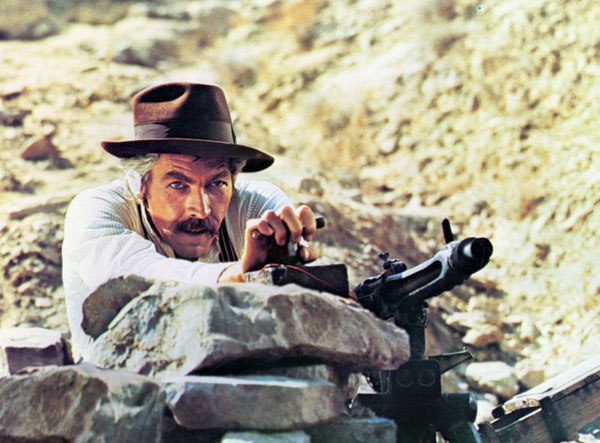
This amazing Western about the partnership of an ex-IRA bombs specialist and a Mexican bandit, have been historically overshadowed by the Dollars Trilogy and Once Upon a Time in the West. Comprehensive in popularity terms, in artistic terms this movie and its soundtrack are at least equal to previous Leone/Morricone works.
The story is a violent tale: machine guns and bombs are the major roles, simple Pistols are just supporting actors. The New Hollywood Wave incorporated Leone’s realism and irony, and took them to another level. Now Leone was dialoguing with Peckinpah’s The Wild Bunch.
Like The Good, The Bad and The Ugly, the characters find themselves in the middle of a war (The Mexican Revolution). Morricone’s scores fits perfectly for each moment: picaresque when Juan (Rod Steiger) is on action, nostalgic when John (James Coburn) is remembering his past in Ireland, ironic when the bandits are robbing the bank (“Marcia degli Accattoni” or March of the Beggars is a funny track that share similarities with another track related to a picaresque crew, Carlo’s Rustichelli theme for L’Armata Brancaleone, Mario Monicelli’s masterpiece).
The theme track is a junction of all elements that made the classical Western Morrricone sound. It starts beautifully, like Once upon a Time in the West theme, then slowly changes into a whispering melody and two words sang by Alessandro Alessandroni, which work more like an instrument than a properly singing melody.
After that enters the climax composed by Edda Dell’Orso singing in a opera like form, resembling The Ecstasy of Gold, in a dream like atmosphere representing the strange and loyal friendship between Juan and John (same names in Spanish and English).
12. Cold Eyes of Fear (1971) by Enzo Castellari
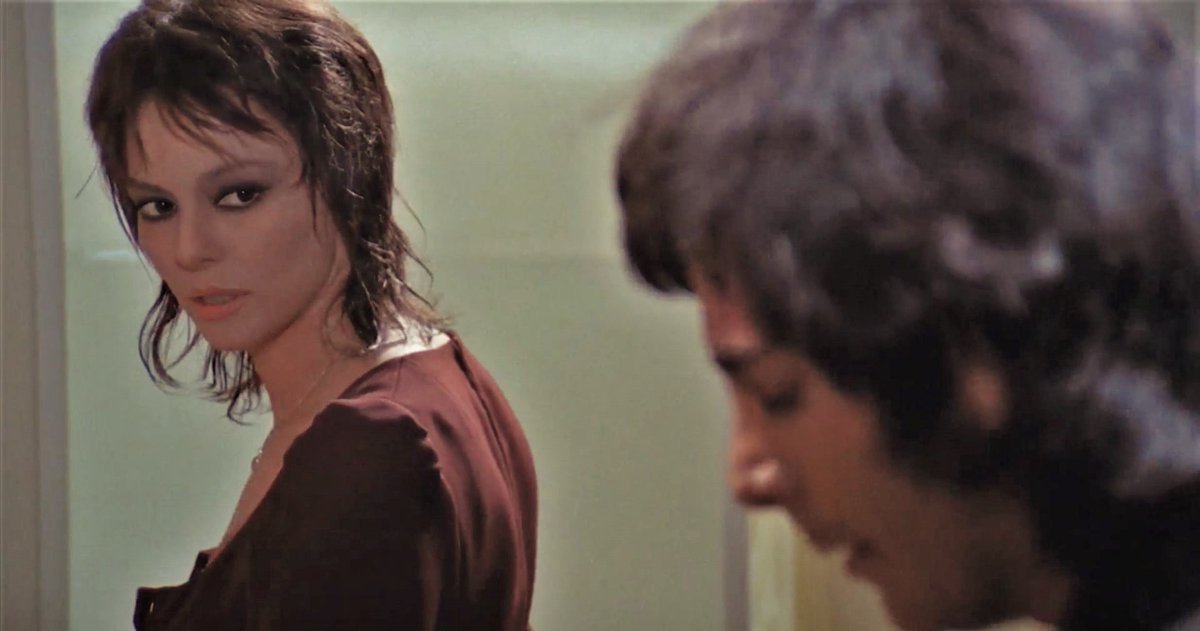
Who knows only Morricone Western sounds and classical music themes like Cinema Paradiso, may find surprisingly strange the noise attack of Morricone’s Cold Eyes of Fear Soundtrack. Using the Gruppo di Improvvisazione di Nuova Consonaza, the Maestro created a score that is as intense and enigmatic as the Giallo’s movie.
Morricone produced lots of works for the Giallo cinema, focusing more on dissonant and electric aspects for these movies soundtracks. His work influenced Italian Progressive band Goblin to create the scary soundtrack for Dario Argento’s “Suspiria”, one of the most famous Giallo from Italy. Tracks like “Seguita” are similar to things that Miles Davis were doing in the US, combining electric jazz grooves with dissonant experimentation.
Both Miles and Ennio were trumpet players, and Miles Davis’ Sketches of Spain influenced a lot Morricone’s works. Mike Patton,frontman of Faith no More and innumerous bands like Mr. Bungle and Fantômas, is a long time Morricone admirer and included “Seguita” and “Folle Folle” on Morricone compilation “Crime and Dissonance”, issued by his independent label Ipecac Records and containing works of Morricone for mainly Giallo movies. Characterized by experimentation and extreme sounds, they were a big influence for Patton’s career.
13. 1900 (1976) by Bernardo Bertolucci
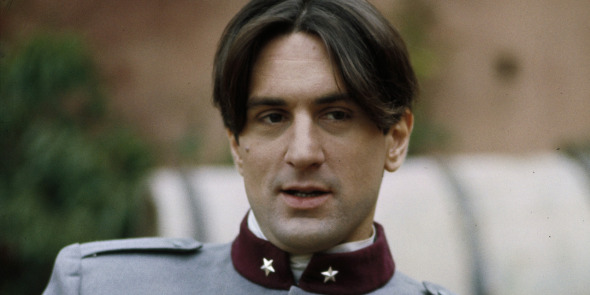
“Then, if I can dare, there was my own Morricone, who wrote the music especially for 1900. In fact, without knowing, Ennio has written two or three beautiful possible national anthems for Italy. I thought that only Ennio could give Epic sounds, only him.” – Bernardo Bertolucci
Bertolucci had worked on Once Upon a Time in the West along with fellow Italians Dario Argento and Sergio Leone. He was a screenwriter in that movie and did a vast research along Argento about Western Movies to create the plot for Leone’s homage to the genre. But in 1976, came the time when Bertolucci wanted to have his own Morricone score, produced for his epic about Italian history: 1900.
Starring Gerard Depardieu and Robert De Niro, the picture tells the story of two Italian men over the course of 20th Century’s first half, a period characterized by political tension, as Italy, a recently independent and united country, saw the rising of Fascist’s regime in the figure of Benito Mussolini. The score is wistful and nostalgic, using classical orchestrated themes to the Epic story.
14. The Thing (1982) by John Carpenter
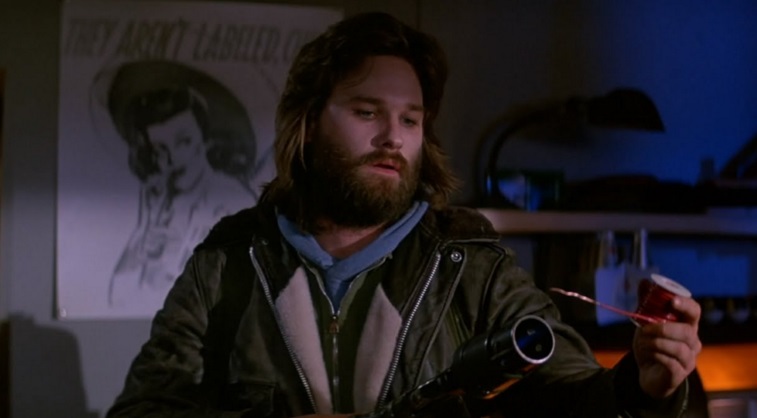
John Carpenter produced one of the most terrifyingly bizarre movies and soundtracks of all times. Although, in his first movie made by a major Studio, he invited Morricone to produce a menacing, cold and robotic masterpiece. Morricone adapted his desert and isolated landscapes to an icy environment, adding a suspense atmosphere to the Sci-fi Horror classic.
15. Once Upon a Time in America (1984) by Sergio Leone
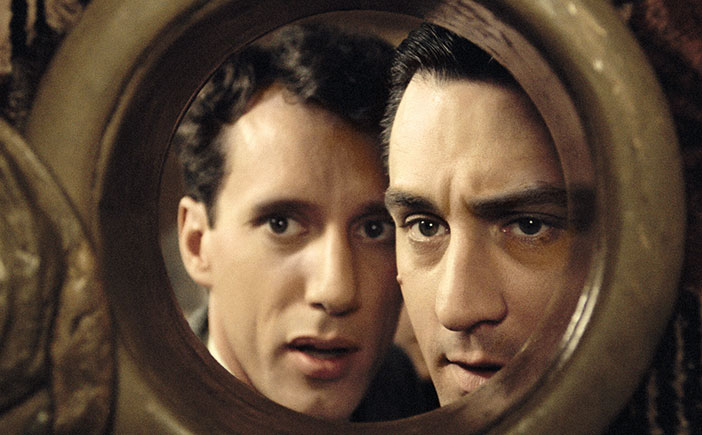
Considered to be Leone’s most ambitious project, this masterpiece is a story of friendship, love, betrayal, money, nostalgia, ambition and death.
The last partnership between Leone and Morricone, this Soundtrack is an astonishing mix of memorable melodies (The Theme Song), heart aching moments (Deborah’s Theme) and Nostalgia sounds provided by a Pan flute (Cockeye’s Song). Wong Kar-Wai used music from this score on his “The Grandmaster”, as a tribute to Morricone and Leone.
16. The Mission (1986) by Roland Joffe
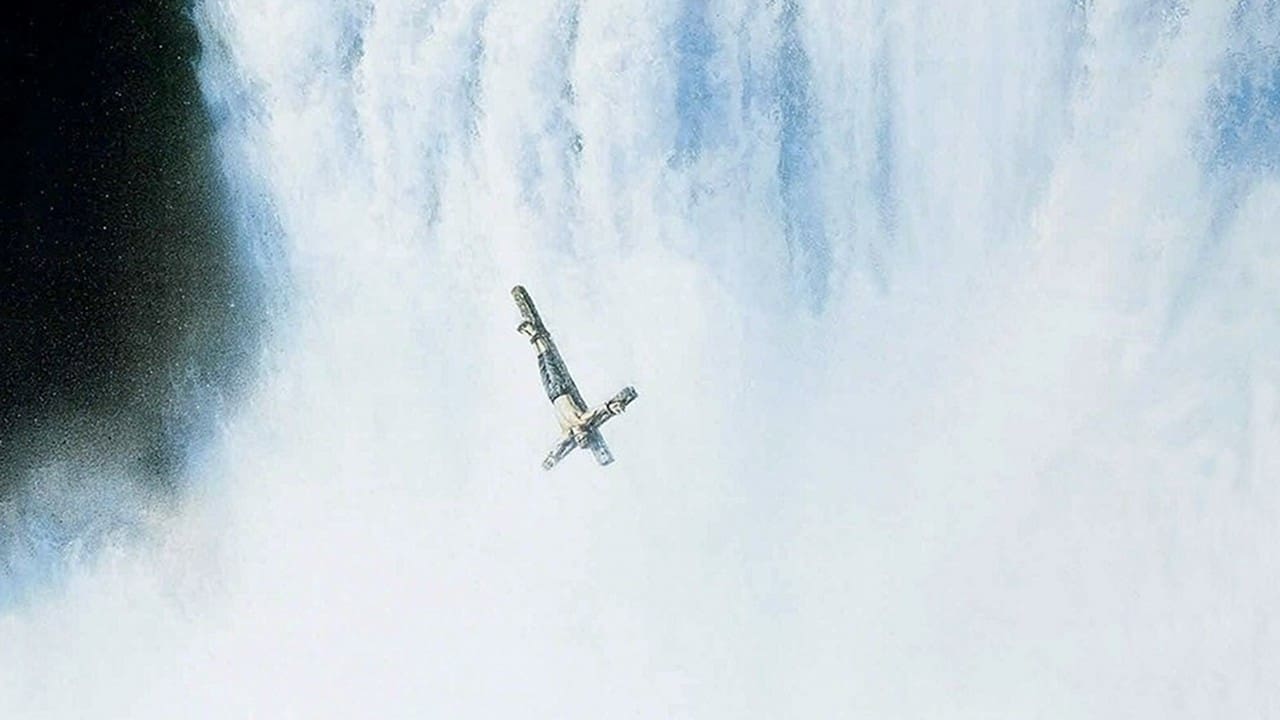
No matter what happens, Morricone has always the capacity to reinvent himself and create songs that are so amazing that one can ask if that was just a brief moment of contact with celestial entities. After Once Upon a Time in America, The Maestro scored another mesmerizing masterpiece: The Mission, for Rolland Joffe’s tail about the contact between Spanish Jesuits and South American natives.
The score represents the union between these two forces, combining tribal Indian percussion and Pan Flutes with Gregorian chants and church choirs. Similar to Once Upon a Time in the West, there is a scene in which the main character (Father Gabriel) plays a musical instrument (Oboe) in order to make contact with the Guarani Indians. The movie also represents one of Morricone’s beliefs “Music as salvation”, in a scene where an Indian girl rescues a Violin from debris that were sunk in a river.
17. The Untouchables (1987) by Brian de Palma
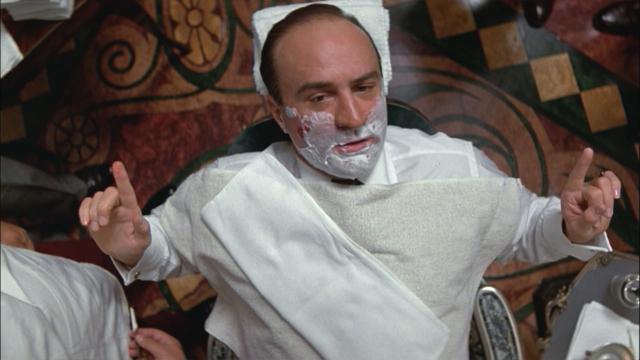
Brian de Palma’s had chosen an Italian composer to produce the soundtrack of his cocaine-fueled gangster tale (Scarface, scored by legendary composer Giorgio Moroder).
When he decided to film another gangster story, one about Al Capone and the alcohol prohibition, the natural choice was Ennio Morricone, a composer capable to score heroic and brave sounds for The Untouchables struggle against Capone’s gang (the Theme song), an Italian influenced melody with drum beats and jazz trumpets (Al Capone’s theme) and a scary background for one of the most famous moments in Cinema History, the shootout at the Union Station (Machine Gun Lullaby).
18. Cinema Paradiso (1988) by Giuseppe Tronatore
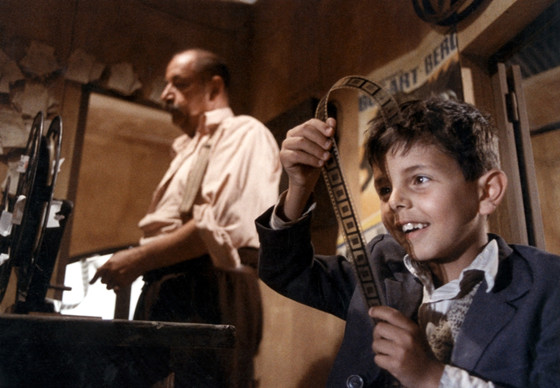
Giuseppe Tornatore’s movie is a metalinguistic homage to Cinema, and a beautiful tale about friendship, love, childhood and adulthood. Ennio Morricone’s Love Theme condensed all these feelings in just one song. Morricone always says he is not a piano virtuoso. It doesn’t matter.
The Love Theme is a graceful melody that represents and adds color to the gentle mood and nostalgic spirit of the movie.
19. Malèna (2000) by Giuseppe Tornatore

Another combination between Morricone and Tornatore, this movie is also set in Sicily during World War II, and tells the story of a Young boy who falls in Love with an older woman (the epitome of Italian beauty, Monica Bellucci). The misogynist Sicilian society serves as a background for this strange love story. The Soundtrack is a continuation of Cinema Paradiso: Heartbreaking melodies filled with Nostalgia about Italy.
Morricone never lived abroad Italy, but his work had to travel to Hollywood to become worldwide known. Malèna seems like a tribute to the Italy that Morricone never abandoned and that will never abandon him. The Maestro is a cultural heritage in Italy, paring side by side with Leonardo da Vinci, Spaghetti, Fellini and Pavarotti. Nothing bad, if you consider a guy that started in music because, in his own words: “Italian Neo Realism lacked good soundtracks”.
20. The Hateful Eight (2015) by Quentin Tarantino
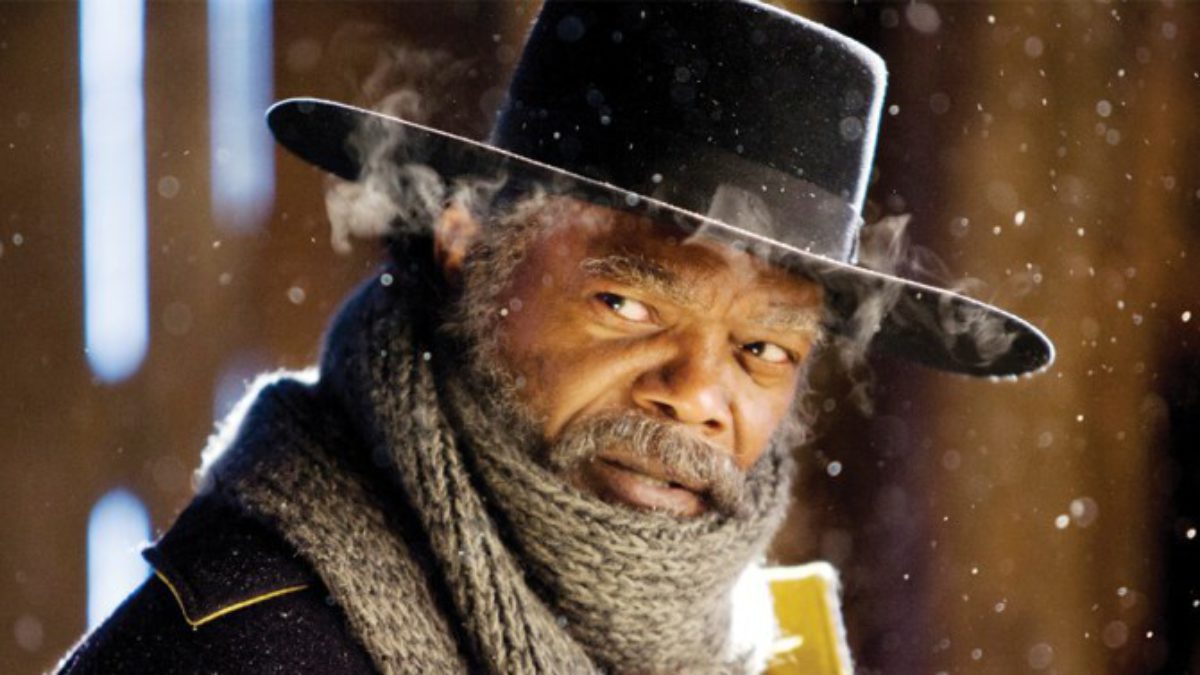
Ennio Moricone is most notable for his scoring of Spaghetti Westerns several decades ago. His music has been reused in countless modern films and television programs, but his newer contributions are hard to come by. Tarantino recently rallied him up to score his first western in forty years, and he miraculously agreed. Morricone’s score for The Hateful Eight is downright enchanting from beginning to end. If you need proof that Morricone is a legend, look no further.
Tarantino usually avoids putting original scores in his films. He’s known for gathering music from other films and compiling it all into a neat little package. In fact, Morricone’s past music has been included in Tarantino’s previous films. However, prior to The Hateful Eight, Morricone had only contributed one original song to a Tarantino film. While Tarantino’s use of existing music isn’t inherently bad by any means, hearing a cohesive original score by Morricone is a dream true.
Morricone’s tension-building music is the perfect companion-piece to Tarantino’s whodunit script. The score, like the film itself, is mysterious and moody. It’s reminiscent of Morricone’s old Spaghetti Western scores, but it also offers something new and original. It’s nothing like the scores found in modern blockbusters, and that’s why it stands out. It instantly grabs the audience’s attention because it sounds nothing like anything they’ve heard in a modern movie. It’s unique, captivating, and genuinely special.
Author Bio: Luis Bevilacqua is a Teacher, Language/Literature student, Movie Freak and frontman of Brazilian band Bola 8.